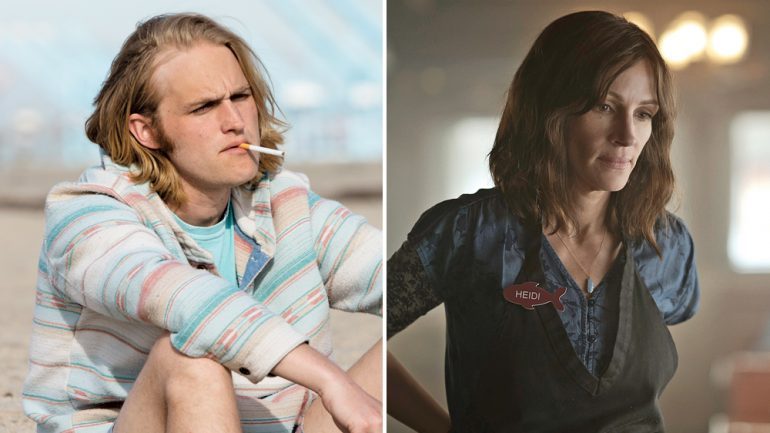‘Homecoming,’ ‘Camping,’ Pose’ Players Share Secrets of Casting
By Carita Rizzo
LOS ANGELES (Variety.com) – As movie stars flock to the TV universe, series creators are now faced with a dilemma: Do you look for a big name to anchor your show, or trust that new talent can break out as well? Some of this year’s most high-profile projects have featured actors more familiar to film: “Maniac,” starring Emma Stone and Jonah Hill; “Sharp Objects,” toplining Amy Adams; “Kidding,” with Jim Carrey at the helm; and “Homecoming,” featuring Julia Roberts in her first role as a series regular.
There’s a simple answer to why having an Academy Award winner, America’s Sweetheart or a world-class comedian as the lead of your show works: It’s good for business.
“If you have someone like attached to a project, people are going to pay attention in a very different way than if it’s a script that they are pitching with no one attached,” says Steven O’Neill, executive vice president of casting and talent development at NBCUniversal Cable Entertainment, which co-produced “Homecoming.” “It does make it that much better when the show is being shopped to various outlets.”
From a creative standpoint, hiring a well-known actor can allow for a character to be pushed further than if starting with a blank slate. Jenni Konner, co-creator of the HBO limited series “Camping,” knew that in casting Jennifer Garner as the series lead, a lot of the character’s quirks would be forgiven.
“Kathryn tends to be a little bit of a difficult character to like,” says Konner. “I do think she’s very relatable, but she’s a toughie. We thought, if you start off with someone as lovable and winning as Jen Garner, it helps you out a lot when you then give her horrible things to do.”
That similar sense of familiarity was also an advantage in “Kidding,” in which creator Dave Holstein wanted to establish a Mr. Rogers-esque character who radiates unconditional kindness in a cold world.
“When you want to bring into the story a level of ‘I’ve grown up with this person,’ and a feeling of nostalgia, there are very few actors who can contribute that,” says Holstein, who wrote the script with in mind. “Part of the writing process was acknowledging that there is a preexisting relationship the audience has with Jim, and it’s the same kind of preexisting relationship you want the audience to have with the character.”
For Holstein, whose other show, “I’m Dying Up Here,” features a cast of lesser-known actors playing up-and-coming comedians in Los Angeles, knowing when to make stars and when to cast them seems obvious, based on the material.
“I think that it’s helpful to scatter the right people across an ensemble,” he says. “Otherwise, if you have Jim Carrey and an ensemble of [unknown] people, the light just goes to Jim Carrey. But when you have a character-driven show that’s about one character it really helps to have a star absorb all that light and focus the story.”
Indeed, the resume of a well-known actor can be creative baggage. In populating the world on “Lodge 49,” creator Jim Gavin and showrunner Peter Ocko had the opposite goal. “We wanted to make sure that the audience, when they watch the show, wasn’t distracted by their awareness of a big name,” says Ocko. “The way the show is introduced to the audience, it doesn’t become one person’s show. They’re not instantly watching it through the lens of a star, which I think really helps create the reality of our world.”
Sometimes a series requires a little bit of both worlds. In “Pose,” a few well-known actors within the Ryan Murphy-verse were cast in anchoring roles, but the real stars of the show were the previously unknown cast members of the ballroom scene, who now comprise the biggest trans ensemble in television history.
“” casting director Alexa Fogel says in order to find the right person for a role, you must trust the auditioning process.
“It’s not even about confidence, it’s that I have great faith in the process,” she says. “I know that once you can put your head down and do the work you’re going to find them. You may not find them until the day before you start shooting, but it’s going to happen.”
Fogel is wary of chemistry reads, especially when working with unestablished actors, instead focusing on getting the best performance out of each individual. She prefers that actors initially audition with her, before involving other potential cast members. “My job is to put them in the best possible light, and since they’re already comfortable with me, they’re going to do their best work,” she says.
Whether the cast includes an award-winning actor or a troupe just starting out, on-set camaraderie remains an important factor. To make his co-stars feel comfortable, Holstein says, Carrey would often pull Grinch faces with the extras on set. Gary Levine, Showtime’s president of programming, recalls William H. Macy spending a week with his “Shameless” family, early in its run, to create a familial bond that would last for years.
“Whoever is number one on the call sheet usually sets a tone,” says Levine. “When we are talking about hiring known actors, if part of what is known is their bad behavior, we will tend to look at somebody else.”
These days, when it comes to starring roles on television, there are plenty of takers. O’Neill compares the current TV environment to independent film in its heyday.
“People are interested because of the depth of great material,” he says. “Why not take advantage of these actors’ excitement when we all agree that the material deserves that sort of attention?”

